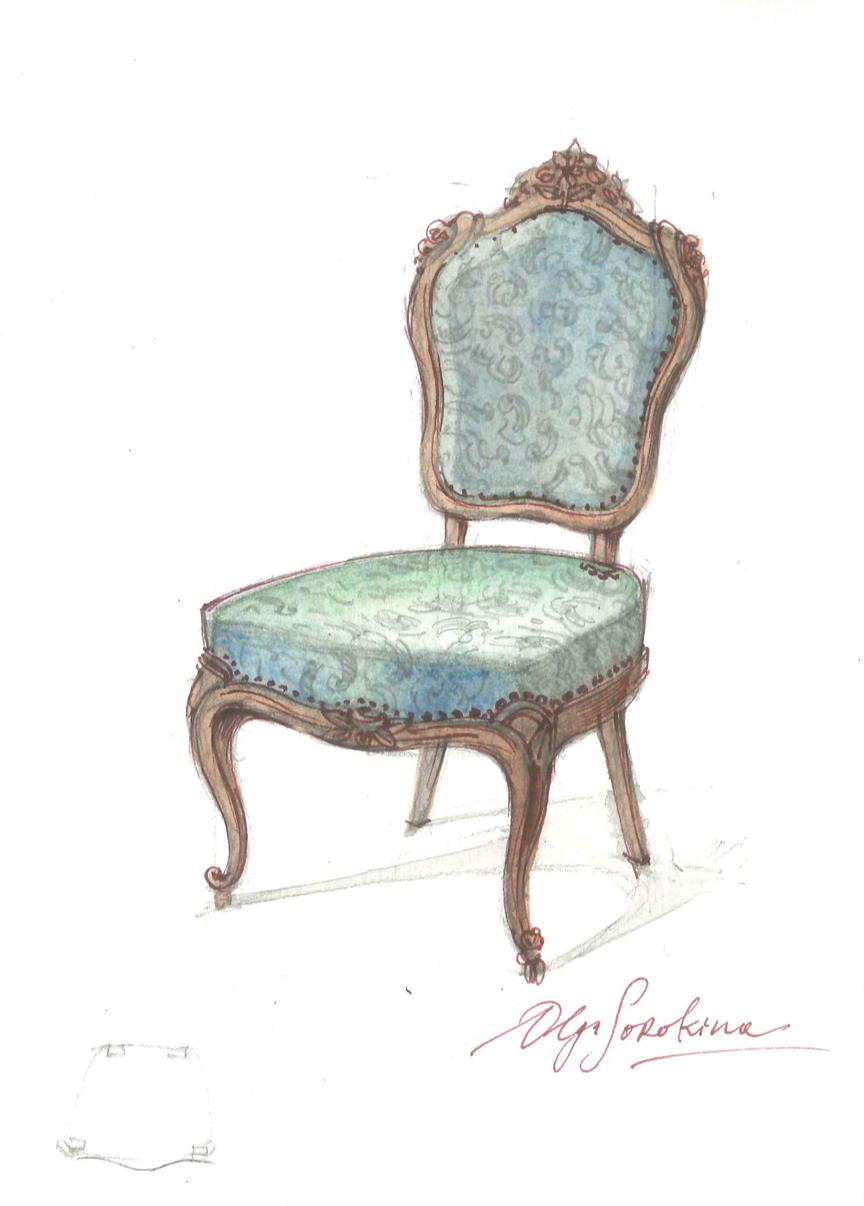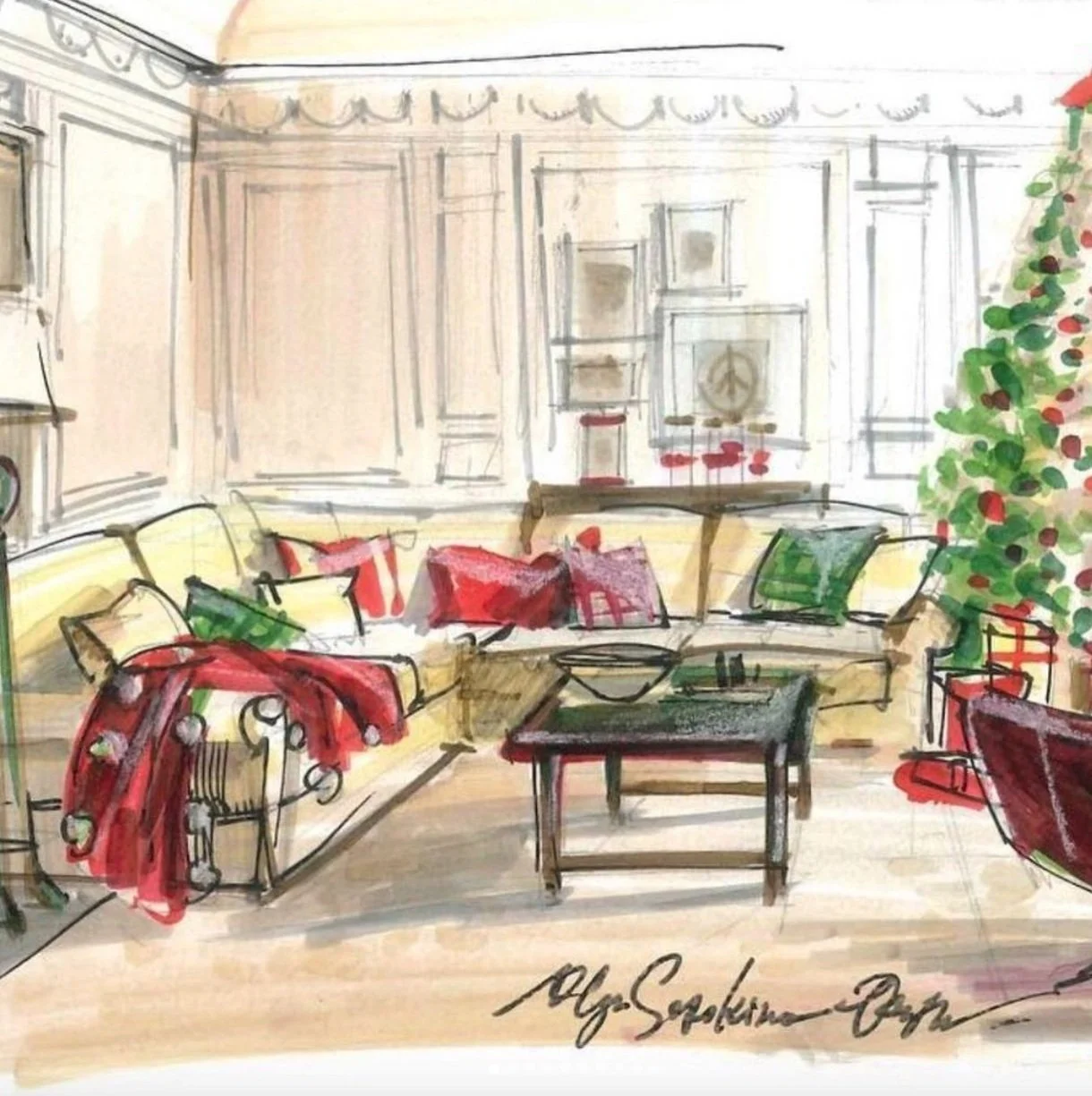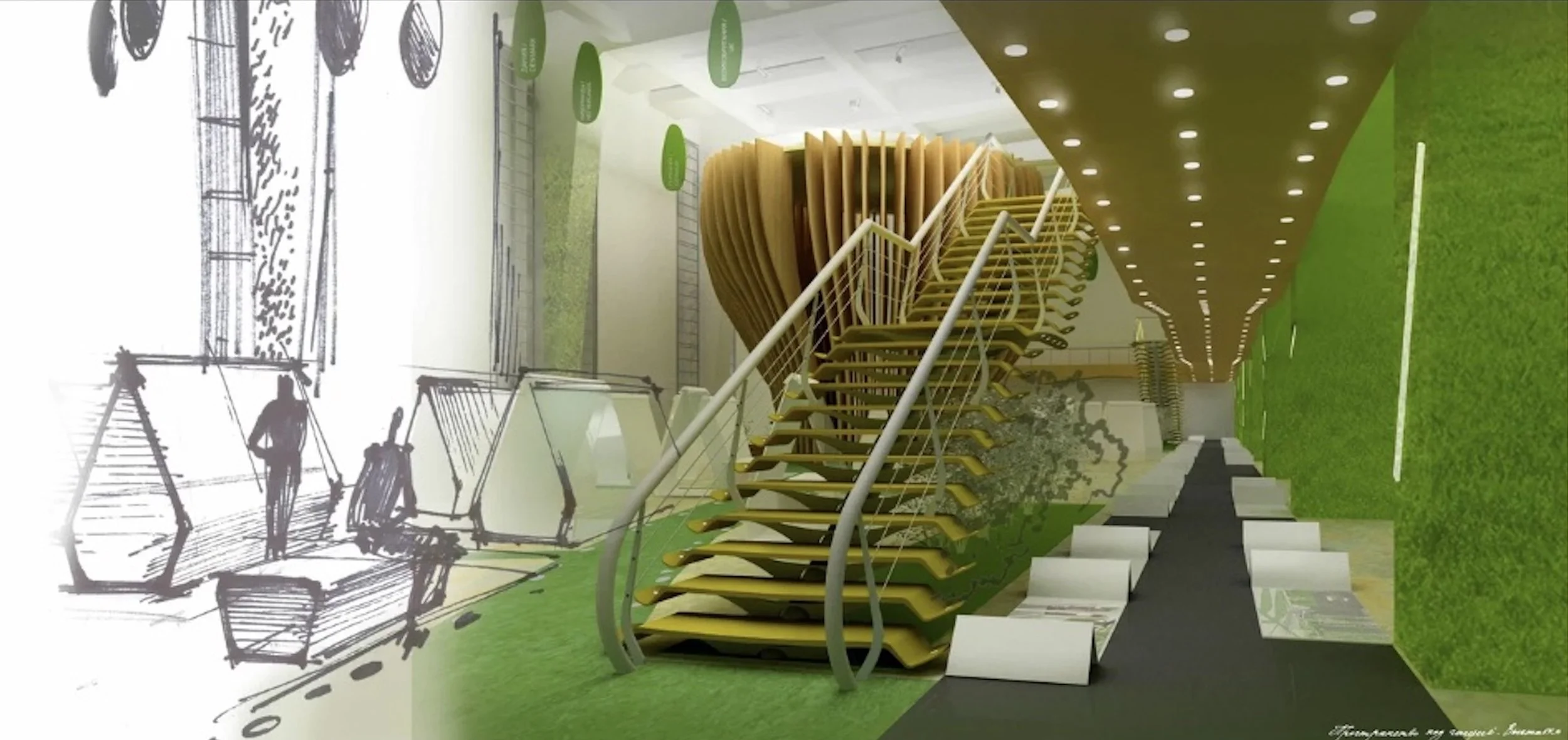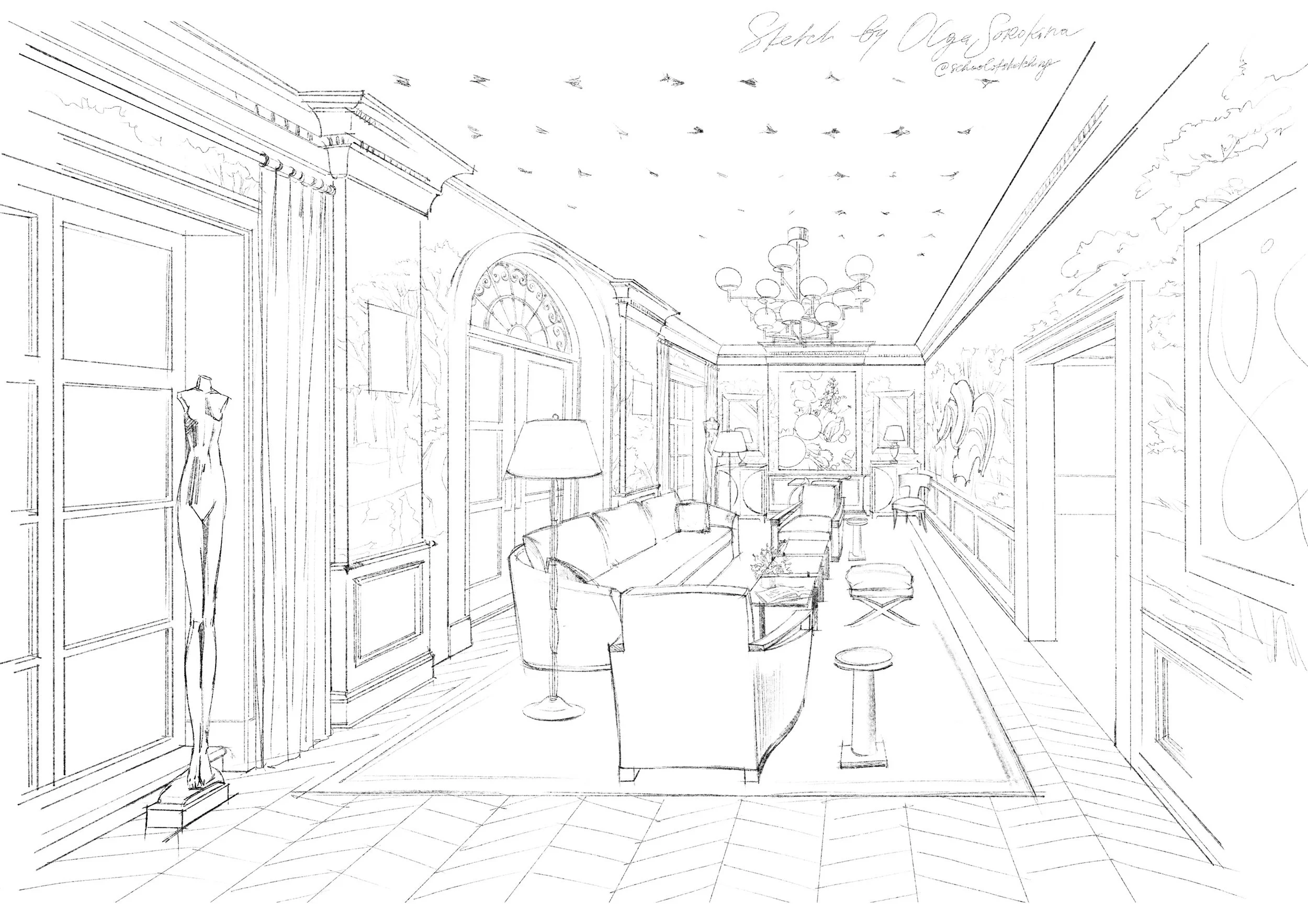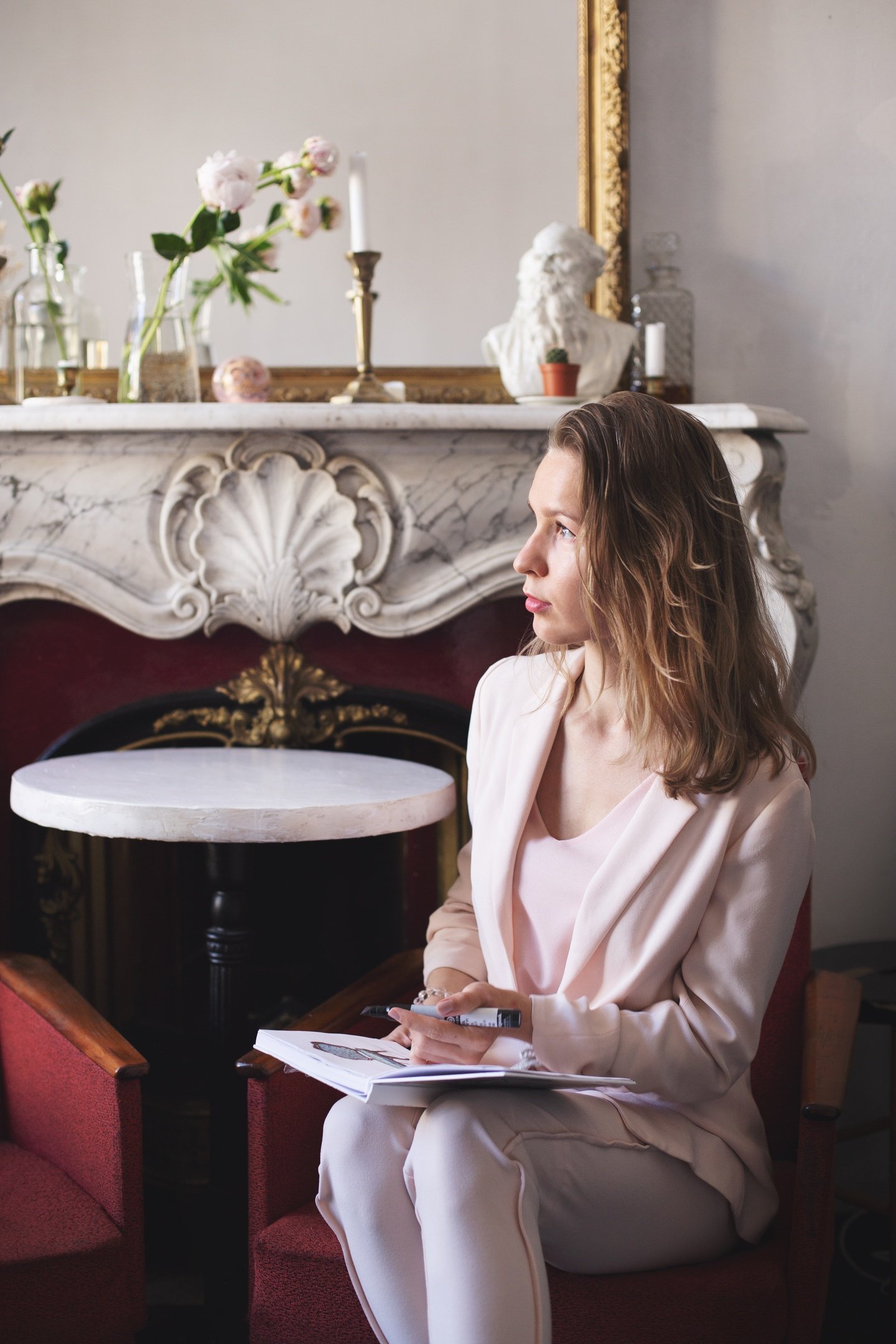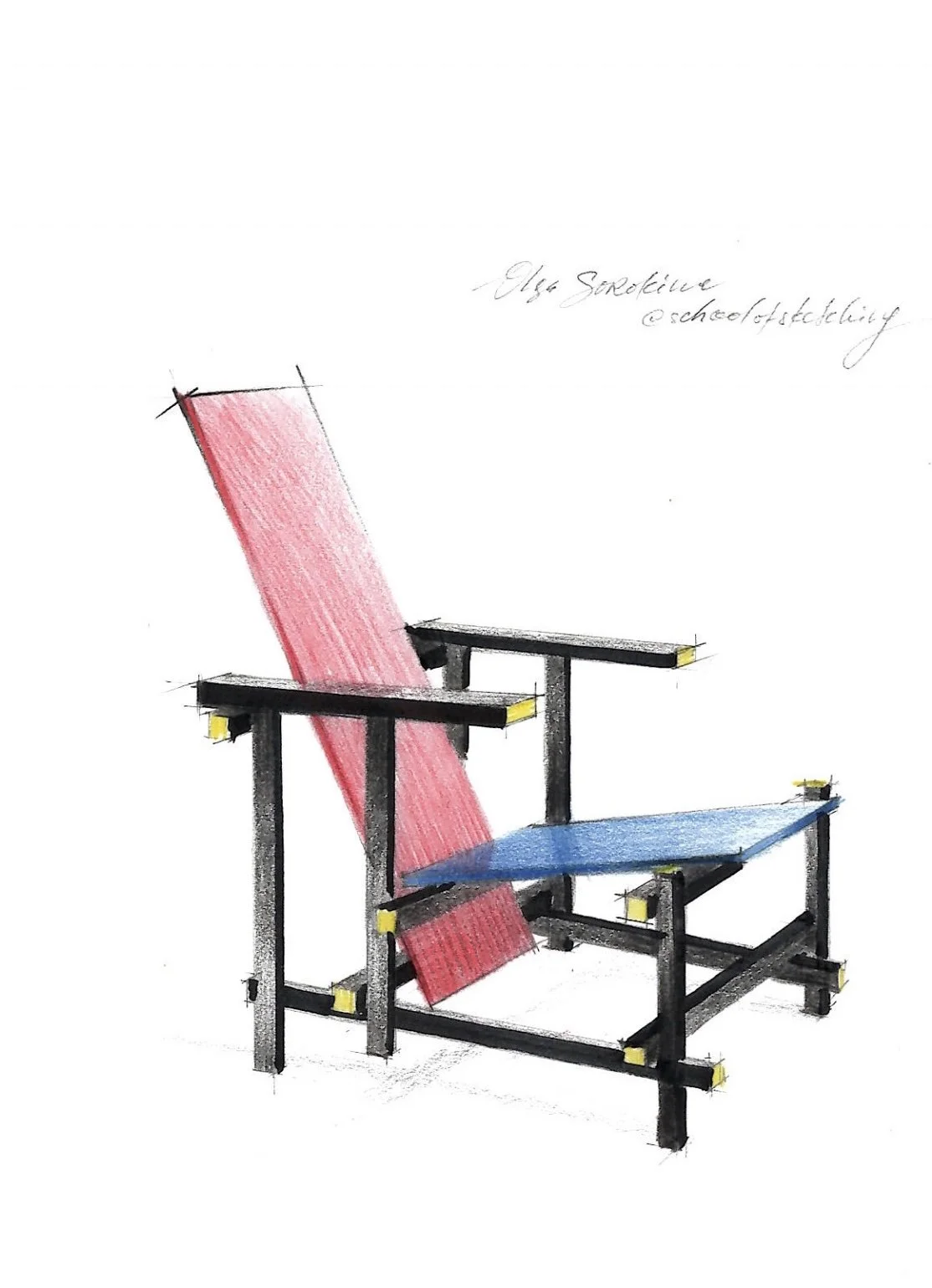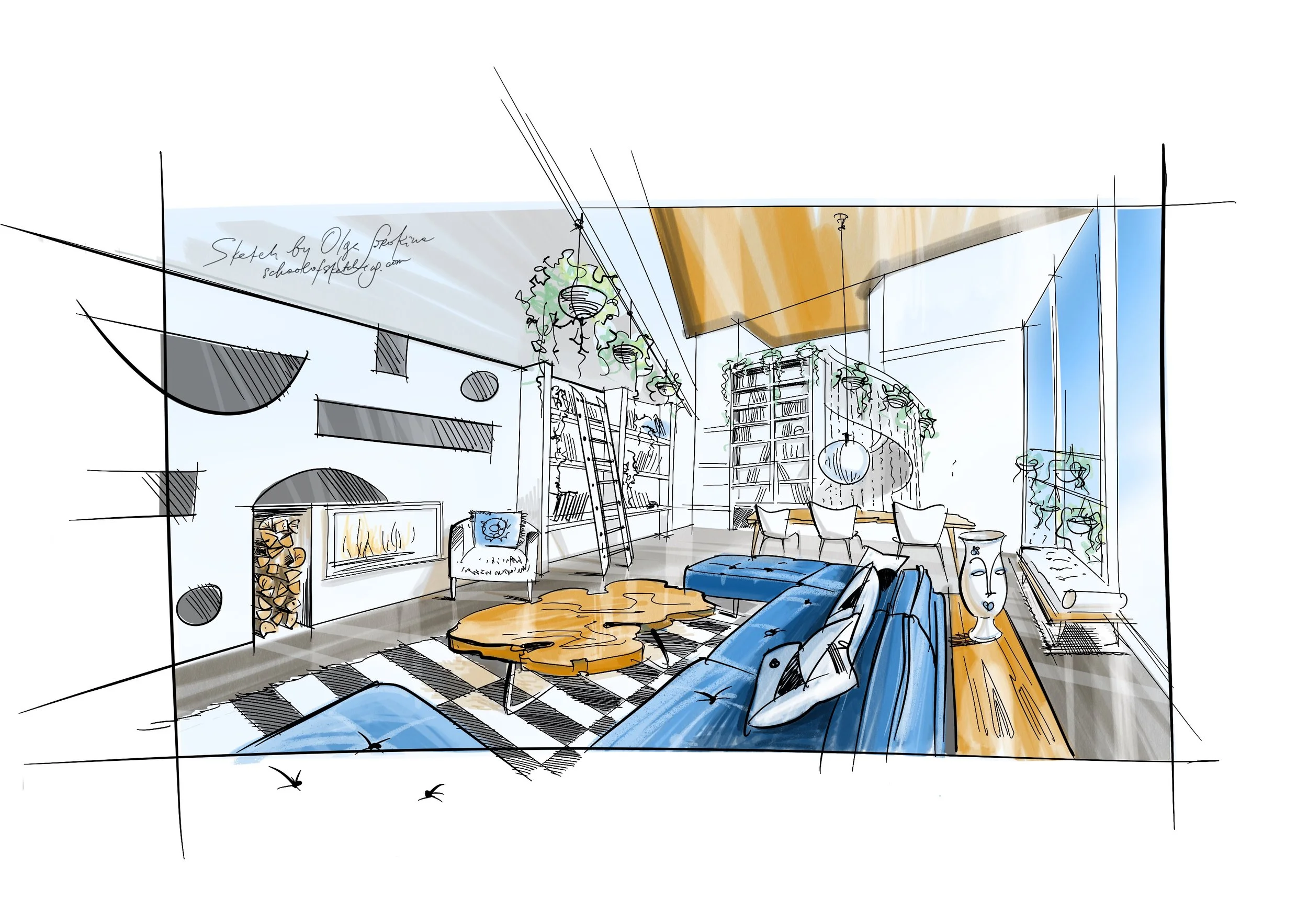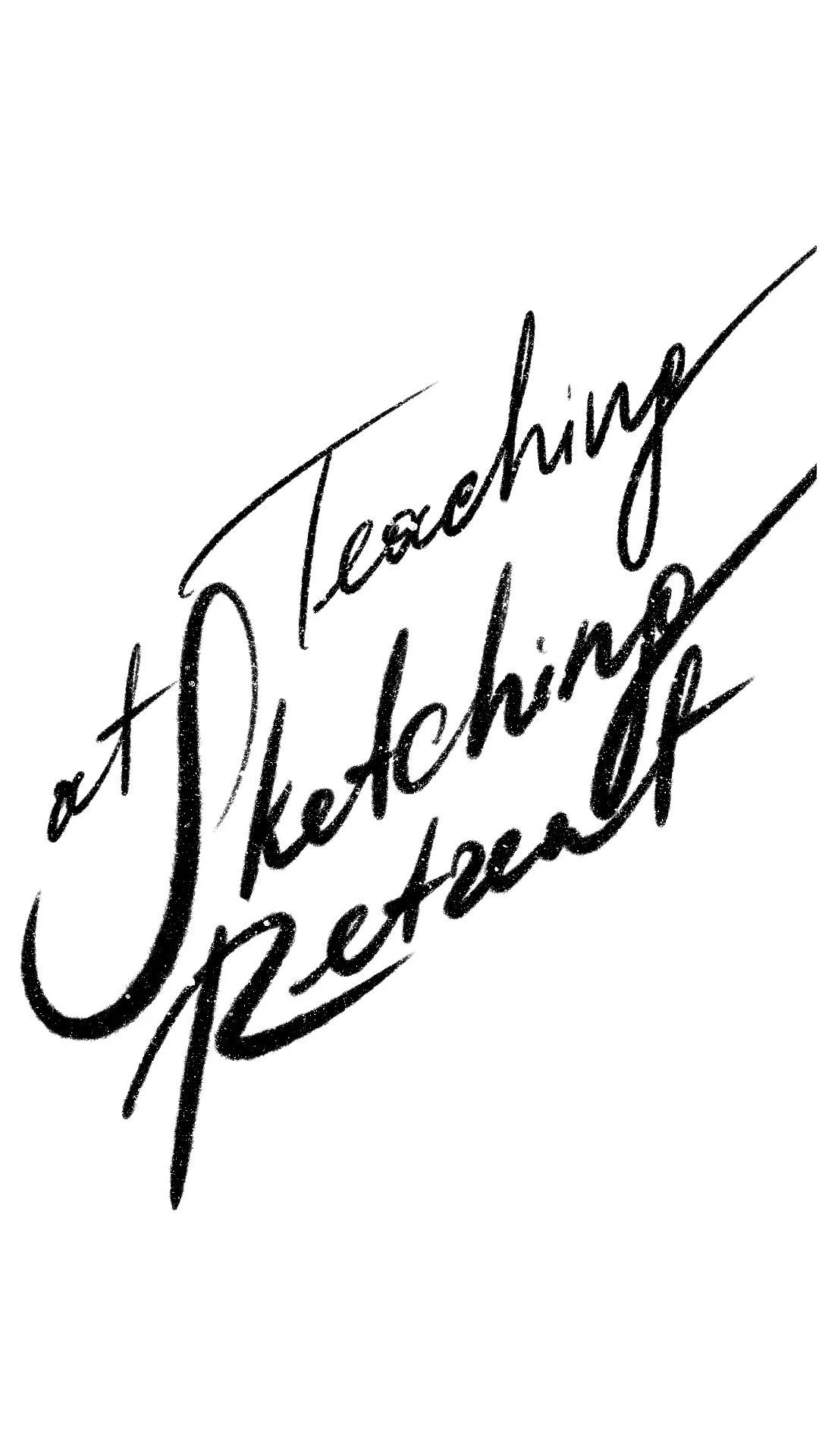The 19th century was a remarkable era for furniture design, marked by a rich tapestry of styles that continue to captivate us today. From the refined grace of Neoclassical pieces to the ornate splendor of Victorian creations, this century witnessed an evolution in design influenced by history, technology, and changing tastes.
Rococo Revival Chair. Drawing by Olga Sorokina from “Interior Sketching in Watercolour” Online Course
19th-century furniture encompasses a wide range of styles and designs that were popular during the 1800s. This century witnessed significant changes in furniture design and production techniques, influenced by historical events, social changes, and technological advancements.
Here are some key aspects of 19th-century furniture:
1. Neoclassical Furniture (Late 18th to Early 19th Century): The early 19th century saw the continuation of Neoclassical design, which drew inspiration from ancient Greek and Roman art and architecture. Furniture from this period often featured clean lines, classical motifs, and a sense of symmetry. Materials such as mahogany and rosewood were commonly used.
2. Regency Furniture (Early 19th Century): The Regency period, which roughly corresponds to the first quarter of the 19th century, was characterized by elegant and refined furniture design. Dark woods like mahogany were popular, and pieces often featured classical ornamentation, brass inlays, and decorative motifs.
3. Victorian Furniture (Mid- to Late 19th Century): The Victorian era, spanning most of the 19th century, was marked by a diversity of furniture styles due to the Industrial Revolution and changing tastes. Early Victorian furniture continued the Neoclassical tradition, while the mid- and late-Victorian periods saw the rise of various revival styles, including:
- Gothic Revival: Inspired by medieval architecture, Gothic Revival furniture featured pointed arches, tracery, and dark woods like oak.
- Renaissance Revival: Influenced by the Renaissance period, this style included ornate carvings, rich fabrics, and heavy, dark furniture.
- Rococo Revival: A revival of the Rococo style from the 18th century, characterized by elaborate ornamentation, curved lines, and light, pastel-colored woods.
4. Arts and Crafts Movement (Late 19th Century): In the latter part of the 19th century, a reaction against mass-produced, overly ornate furniture led to the Arts and Crafts movement. This movement emphasized craftsmanship, simplicity, and the use of natural materials. Furniture from this period was often handmade, featuring exposed joinery and a focus on functional design.
5. Eastlake Furniture (Late 19th Century): Named after the British designer Charles Eastlake, this style was influenced by the Aesthetic Movement and featured geometric shapes, incised decoration, and ebonized wood.
6. Art Nouveau (Late 19th to Early 20th Century): At the end of the 19th century, the Art Nouveau movement emerged, characterized by flowing, organic forms, sinuous lines, and motifs inspired by nature. Furniture of this period often featured curvilinear designs, intricate inlays, and materials like stained glass.
Key moments:
Innovations in Production: During the 19th century, advancements in manufacturing technology allowed for the mass production of furniture, making it more accessible to a wider range of people. This led to the production of simpler, more affordable furniture alongside high-end, handcrafted pieces.
Upholstery and Fabrics: Fabrics and upholstery styles also evolved during the 19th century. Jacquard-woven fabrics, floral patterns, and richly embroidered textiles were commonly used for upholstery, curtains, and drapery.
Overall, 19th-century furniture reflects the dynamic changes in design, technology, and societal influences that occurred during this century. It encompasses a wide range of styles, from the classical elegance of the early 19th century to the ornate eclecticism of the Victorian era and the innovative simplicity of the Arts and Crafts movement.
P.S. Please share this article with your friends on social media so more people can learn from it.


